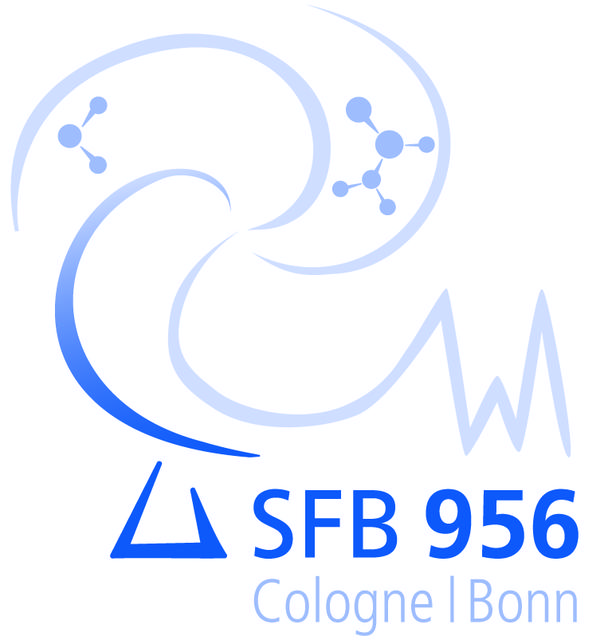Astrophysics is a strong scientific tie between both Universities. The collaboration is documented by five, more or less successive CRCs, which have provided a major input to the strategic development planning of astrophysics at both Universities. The SFB 956 (www.sfb956.de) “Conditions and Impact of Star Formation – Astrophysics, Instrumentation and Laboratory Research” just ended in December 2022, after a full financing over 12 years.
The CRC 956 “Conditions and Impact of Star Formation – Astrophysics, Instrumentation and Laboratory Research” combines the unique expertise of the participating astrophysics groups in Cologne and Bonn towards three main goals: to advance our scientific topic beyond the state-of-the-art; to foster and intensify the scientific collaboration of the involved disciplines; and to train young researchers in the unique research environment provided by the CRC 956.The scientific scope of the CRC 956 is set by the “Cosmic Cycle of Star Formation”, which comprises the formation of molecular clouds from the diffuse interstellar medium in star-forming galaxies, the formation of stars within these molecular clouds, the dispersal of the molecular clouds by feedback from the young (massive) stars, and the feedback of the metal-enriched material of the aged stars into the interstellar medium, closing the cycle. The Cosmic Cycle shapes the evolution of the baryonic matter in the Universe, from the Big Bang to present day. The CRC 956 focuses on understanding and identifying the physical processes which set the conditions for star formation in different galactic environments, reaching from normal star forming galaxies like our Milky Way to extreme conditions present near Active Galactic Nuclei (AGN) or in starbursts.It is the unique combination of a strong observational astrophysics program (project area A) with the adequate advanced modeling tools and simulations (project area C), the necessary laboratory astrophysics (project area B), and the development of new astronomical instrumentation (project area D) that enables the progress in star formation research in the CRC 956.

